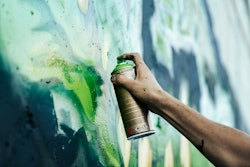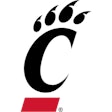Copyright 2018 Gannett Company, Inc.
All Rights Reserved
USA TODAY
When catcher Yadier Molina got hit in the crotch by a foul-tipped, 102 mph fastball on May 6, the medical personnel at Busch Stadium in St. Louis weren't the only ones who sprang into action.
So did people who manufacture and sell athletic cups.
Craig Diamond of Diamond MMA said he mailed Molina one of his company's protective cups about the same time the Cardinals' All-Star catcher had surgery for a traumatic hematoma.
Owners of a company called NuttyBuddy said they followed suit, shipping to Molina their uniquely shaped cup and a note that explained, "It's anatomically correct."
And the founder of Armored Nutshellz told the Fox TV affiliate in St. Louis that the Cardinals bought bullet-resistant cups from the Missouri company soon after the injury, which is expected to sideline Molina for four weeks. That news report went viral thanks to video of Jeremiah Raber, founder of Armored Nutshellz, wearing a cup and taking a 9-millimeter bullet fired from a Smith & Wesson rifle — without the cup so much as cracking.
"The more awareness about the potential dangers of groin injuries, the better for all of us," said Craig Diamond, founder of Diamond MMA, "for all of the guys really trying to make a quality product."
They're not all guys.
Cup makers today include everyone from an entrepreneurial baseball mom and her 12-year-old son to large companies, using everything from plastic to Kevlar and selling their products for as little as $10 and as much as $125. Not wearing a cup can be much costlier.
In 2017, Bosnian soccer player Marin Galic became the latest professional athlete to lose a testicle after a competition-related injury.
John Baker, a retired major league catcher who played in the big leagues from 2008 to 2014 and outspoken advocate for wearing cups, said Molina's injury provides an opportunity. "I would argue there's probably more discussion about EvoShields and elbow guards than there is about groin protection," Baker told USA TODAY. "Hopefully Yadi's OK and he makes a full recovery, and hopefully it starts a talking point."
The oddities of cups
Claude Berry, who played sporadically in the big leagues from 1904 to 1915, hit three home runs and batted .219. But his impact transcended statistics. A catcher who suited up for the White Sox, Philadelphia Athletics and Pittsburgh Rebels, he's credited with introducing the cup to the majors, according to the book The Cultural Encyclopedia of Baseball.
Cal Ripken Jr. wore a metal cup during his Hall of Fame baseball career, according to a 2012 interview with National Public Radio. "My dad, it is kind of weird, and this is true," Ripken said, explaining that when he was headed for the pros his father gave him a Baltimore Orioles bag, then presented him with a metal cup and said, "Welcome to manhood."
Not all cups are capable of stopping a speeding bullet, or even a hard object. In 2009, Under Armour voluntarily recalled about 210,000 cups after five reports of the product breaking, including an injury involving cuts and bruising, according to the U.S. Consumer Product Safety Commission. A year earlier, a Yale lacrosse player sued Shock Doctor, the brand leader in cup sales. The thrust: an allegedly defective cup resulted in the player losing use of at least one testicle, sexual performance anxiety and partial loss of ability to father children, according to court records. The matter was settled out of court, records show.
Juan Uribe, a former major league third baseman, took a 106 mph grounder against his unprotected groin in 2016. He continued to play without a cup and explained, "My trainer told me they don't have my size."
Former major league pitcher Mark Littell, founder of NuttyBuddy, suggests there's no such problem with his cups, which rather than small, medium and large come in the following sizes: Hammer, Boss, Hog, Trophy and Mongo.
Said Littlell, "No one wants to walk up to the counter and tell the girl, 'I'm a small.'"
Cup culture
A day before Molina got hit, Minnesota outfielder Eddie Rosario demonstrated another side of the cup culture.
In the fourth inning of the Twins game against the White Sox, Rosario fouled off a curveball that hit the ground and bounced back into his groin. Teammates in the dugout laughed as Rosario waited for the pain to subside. "It hurt, it hurt," Rosario told reporters after the game. "They think it's funny, but it's not funny."
He continues to play without a cup. "The cup is for the catcher, infield guys," he told USA TODAY. "I don't need one."
Based on interviews with active and former players in the major leagues, this is how it works: All catchers wear cups, many pitchers and infielders forgo them and virtually all outfielders play without them.
"I think a lot of players have gotten away from them for whatever reasons, and we don't mandate it or anything like that," noted Paul Molitor, the Twins manager who also said he wore a cup during his Hall of Fame playing career from 1978 to 1998. "I don't know why they would make that choice."
The discomfort of wearing a cup often is cited as a reason. But Torii Hunter, a five-time All-Star outfielder who played in the majors from 1997 to 2015, invoked machismo. "I got hit there before," Hunter said. "I just take it like a man."
Brian Dozier, a second baseman for the Twins, said he finds such sentiment mind-boggling. "I can't even imagine going to the plate without a cup," he said. "Just how hard guys throw now, with movement, and you're trying to hit and you have one that slips away at 100 mph. You can't just get out of the way very quickly."
Yet across all sports, those who do wear cups are in the minority, research suggests.
Less than 13% of the 700 high school and college male athletes surveyed as part a 2015 study said they wear a protective athletic cup. The study, conducted by urologists at The Geisinger Health System in Pennsylvania, also found that across all sports, 18% of athletes reported experiencing a testicular injury and 36% said they observed team members suffer testicular injuries.
The highest prevalence of testicular injuries occurred in lacrosse, followed by wrestling, baseball and football, according to the study.
"I don't know if there's invincibility, but it's painfully clear that today's Millennial generation approaches wearing a protective cup differently than past generations," Joel Sumfest, lead author of the study, told the Williamsport (Pa.) Sun Gazette. "As I remember back, we wore cups all of the time, but it's different now."
Health risks
The issue of cups and the risks of testicular injury is an important public health issue, said Ajay Nangia, a reproductive specialist and a vice chair of urology at the University of Kansas Medical Center.
"It's no laughing matter," Nangia told USA TODAY. "Every sport is susceptible, too, if it's a contact sport."
Although data is scarce, testicular injuries in pro sports have been extensive and excruciating.
Josias Manzanillo was pitching for the Mariners in 1997 when he was hit by a line drive off the bat of Manny Ramirez that tore both of Manzanillo's testicles, according to published reports. He lost one of the testicles during surgery.
Others who have lost a testicle because of sports-related injuries include Virgil Livers, a retired NFL cornerback; Nick Fotiu, a retired NHL forward; and Paul Wood, a retired British rugby player.
Athletes who had testicular surgery include Spurs guard Manu Ginóbili, Orioles catcher Caleb Joseph and retired NHL defenseman Nicklas Lidstrom.
A military study of groin protective equipment for combat soldiers indicates athletes would benefit by wearing cups, said Kevin McVary, chair and professor of urology at Southern Illinois University. "The message is that some type of protection makes a big difference," McVary said. "A blast injury must be umpteen times more forceful than a baseball, which I would say tells me that it's applicable. If you have more protection than you need, well, what's the loss? Whatever discomfort of the cup is."
Complaints about discomfort have spurred companies such as Diamond MMA, NuttyBuddy and Armored Nutshellz to search for solutions.
The cup business
Armored Nutshellz's Raber said he might have to quit his job with the St. Louis Sewer District. That's because he has been flooded with orders since the video of him taking the 9-millimeter bullet while wearing a cup went viral, he said.
The video has been viewed almost 660,000 times since it was posted three years ago and viewed frequently the past couple of weeks, when the visibility of the company Raber has been running in his spare time has skyrocketed.
"I didn't grow up thinking, 'Hey, I want to make a better cup,'" said Raber, 41, who explained that he saw a need for a better cup more than a decade ago while watching a UFC fighter lose a match after a fighter took repeated leg kicks to the crotch.
Like other companies, Raber addressed comfort. He narrowed the bottom of the cup that some athletes said restricted their movement.
And his use of Kevlar and other ballistic-grade material seems to have attracted new customers, which Raber said includes the Orioles, Indians, Angels, Brewers, Yankees, Padres, Rays and Rangers.
Joseph, the Orioles catcher who suffered a testicular injury in 2016, has helped spread the word. "I've been hit multiple times and haven't felt anything, really," Joseph, who said he was using the same cup he wore in high school at the time of his injury and then began wearing the Kevlar cup, told USA TODAY. "It's really saved me.
"Velocities are so much higher. It's dangerous. You're looking at a lot of the concussions catchers are having, and even umpires, just from foul balls. Imagine that in your groin area. Nutshellz, they make an unbelievable product."
But there's competition.
Shock Doctor helped fuel ergonomic progress with a curved, banana-shaped cup. Diamond MMA also touts a design that promotes comfort, and NuttyBuddy touts its anatomically-correct design.
Whatever cup is used must be worn properly to be effective, and most companies sell compression shorts or jockstraps to hold the cup in place.
"People don't really know how to wear these products," said Littell, who is relaunching his product this summer and selling the cups with compression shorts. "They seem to throw a cup down there and think it should be worn loose."
Some details about Molina's injury remain unknown. The Cardinals declined even to say whether he was wearing a cup, but a video posted last week on Facebook offers at least a clue. The video shows Molina standing in front of his locker and the apparent victim of a prank. After looking inside the locker, as if searching in vain, he turns back to the video camera.
Then he holds up a sack with something inside, smiles and says, "At least I have my cup."
Contributing: Steve Berkowitz and Gabe Lacques
Read More of Today's AB Headlines
Subscribe to Our Daily E-Newsletter
Terms and Conditions Privacy Policy



































